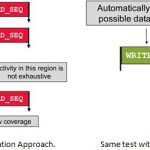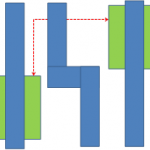[TI’s China Foundry acquired from SMIC]
During my engineering graduation, electronic design courses and mini-projects, the ICs I used to come across were SN 7400 series from Texas Instrumentsthat covered a large range of devices from basic gates and flip-flops to counters, registers, memories, ALUs, system controllers, and… Read More
Electronic Design Automation
Has LinkedIn Jumped the Shark?
LinkedIn is without a doubt the number one social network for semiconductor professionals. Based on my experience, the big LinkedIn boom came with the massive unemployment during the Great Recession of 2009. In my estimate, unemployment was 12%+ at the high point in Silicon Valley and resumes clogged the internet with LinkedIn… Read More
Who Won the DesignVision Awards at DesignCon this year?
The Seattle Seahawks had an awesome victory in the SuperBowl against the Denver Broncos, so folks living here in the Pacific Northwest are feeling proud and optimistic. The recent DesignConconference and exhibit ended 10 days ago and there were also victors announced in terms of the annual DesignVision awards that have three … Read More
Verification Execution: When will we get it right?
Verification technologist Hemendra Talesaraattended a conference in Austin and asked me to post this article on verification execution for him as a blog. I first met Hemendra when he worked at XtremeEDA, and now he works at Synapse Design Automation – a design services company.
“In theory there is no difference between … Read More
Verification Execution: When will we get it right?
Verification technologist Hemendra Talesaraattended a conference in Austin and asked me to post this article on verification execution for him as a blog. I first met Hemendra when he worked at XtremeEDA, and now he works at Synapse Design Automation – a design services company.
“In theory there is no difference between … Read More
SoC Verification Closure Pushes New Paradigms
In the current decade of SoCs, semiconductor design size and complexity has grown by unprecedented scale in terms of gate density, number of IPs, memory blocks, analog and digital content and so on; and yet expected to increase further by many folds. Given that level of design, it’s imperative that SoC verification challenge has… Read More
Cadence Acquires Forte
Cadence today announced that it is acquiring Forte Design Systems. Forte was the earliest of the high-level synthesis (HLS) companies. There were earlier products. Synopsys had Behavioral Compiler and Cadence had a product whose name I forget (Visual Architect?), but both products were too early and were canceled. Cadence … Read More
Cliosoft Grows Again!
Cliosoft was one of the first companies to work with SemiWiki so they are an integral part of our amazing growth and we are part of theirs. I remember talking to Srinath Anantharaman (Cliosoft CEO) for the first time and discussing the goals of working together. It was simple really, there was disinformation in the market about Cliosoft… Read More
DesignCon 2014 AMS Panel Report
DesignCon 2014 was very crowded! I have not seen the attendance numbers but as the first conference of the New Year it was very encouraging. The strength of the fabless semiconductor ecosystem is collaboration and face-to-face interactions are the most valuable, absolutely.
The session I moderated was on Mixed Signal Design … Read More
iDRM for Complex Layout Searches and IP Protection!
iDRM (integrated design rule manager) from Sage-DA is the world’s first and only design rule compiler. As such it is used to develop and capture design rules graphically, and can be used by non-programmers to quickly capture very complex and shape dependent design rules and immediately generate a check for them. The tool… Read More










Quantum Advantage is About the Algorithm, not the Computer